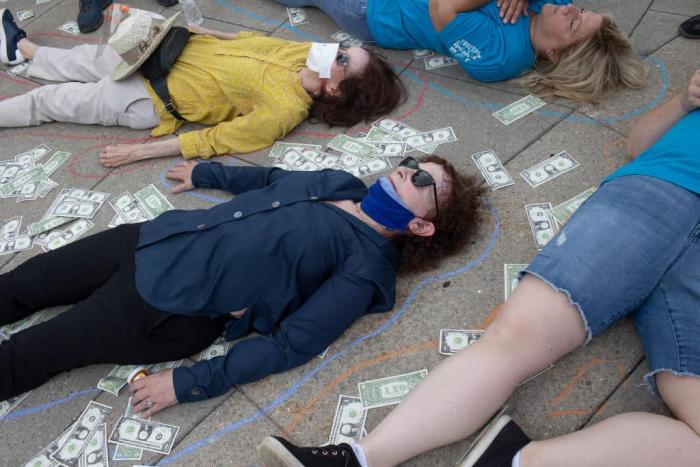All the Beauty and the Bloodshed (Poitras, 2022)
All The Beauty and the Bloodshed is a powerful documentary about marginalized people and the harm that social marginalization causes.
I have fought in and survived two wars, and I can honestly say that I have never done anything as brave as what Nancy Goldin has done with All The Beauty And The Bloodshed. Nan, the name she goes by, is an American photographer and activist with all the eccentric qualities you might expect from a captivating artist. She is perceptive. She is expressive. And most of all, she is an avant-garde. I have watched dozens of documentaries in my lifetime, and I can honestly say that I have never seen one quite like this.
Goldin figured out a way to synergize two separate social issues into one documentary without any of the clumsiness you might expect from such an ambitious effort. She created a nexus between the history of suffering in the LGBTQ community in America and the history of the country’s opioid addiction crisis. And she does so by utilizing her life story as a case study with brutal honesty. She literally bares it all in the most earnest commitment to activism I’ve ever seen. The content of the documentary is an imalgamation of her work as an artist, an activist, a sex worker, and the personification of a phoenix.
Goldin’s remarkable story starts with the relationship she developed with her family in the 1960s, specifically her sister. The film teases a delightfully normative childhood by presenting pleasant black-and-white photos that capture jovial smiles and a well-kept homestead. The photos look like heirlooms that have been kept in a cookie tin ready to be passed down the family tree. The photos have faded and cracked slightly, but they still evoke memories of happy times. However, the cracks in these photos portend anything but happy times.
The film’s use of photographs, and an anachronistic slide machine, is a poignant motif. In Nan’s early life, photos foreshadow the tragic death of her sister, Barbara. They are the harbinger of a drug addiction that would almost kill her during her youth. And her pictures give a visual account of a life marred by struggle and abuse during the 70s and 80s. They also provide a stage. They provide a stage for all of the black people, gay people, and random people that have had such a profound effect on Nan’s life and work that deserve to be seen. Nan’s photographs allow these people to be seen with a dignity and a concern that they have long been denied.
Nan Goldin’s ability to capture that humanity comes from her time spent in their proverbial trenches. As a young adult, Goldin moved to New York City and immersed herself in the much-maligned counterculture of the metropolis. She credits the bravery and resiliency of her sister, Barbara, several times during the film as the inspiration for adopting such a lifestyle. And it was a lifestyle that embraced her as much as she embraced it. The documentary provides visual evidence of nearly everything Goldin did while living there to prove it! The documentary puts the viewer in complete awe of the foresight and/or patience Goldin had to compile such a meticulous visual record of her unruly existence. There is sex, drugs, not much rock ‘n’ roll, but definitely the presentation of an absolutely, enviously devil-may-care life.
Such a life does tend to lead to tragedy, however, because it’s risky business and the film is carefully responsible to make that apparent. The film also makes it apparent that the folks that choose this lifestyle, or fall into it, deserve compassion and respect regardless of how someone might negatively judge their morals. The documentary points to the AIDS crisis of the 1980s as an example. Gay men were vilified and pretty much left to die because the American public intimated that gay men deserved to die from AIDS…for being gay. Goldin offers a powerful indictment of American values in that regard.
Ultimately, this film reinforced a very firm belief that I have: There is a prevailing conflation in America between morals and ethics. They are not the same thing. Being gay is not immoral. Being a drug addict is not immoral. But marginalizing them for being those things is unethical because the foundation of America’s Constitution is to treat everyone with respect and dignity. Gay men, lesbian women, and everyone in between deserve dignity and respect because they are human beings. Folks suffering from addiction deserve compassion because they are human beings. All The Beauty and the Bloodshed offers viewers who may unwittingly be stuck in an echo chamber that prevents them from realizing that a chance to escape.
This film was played at Filmfest919.

